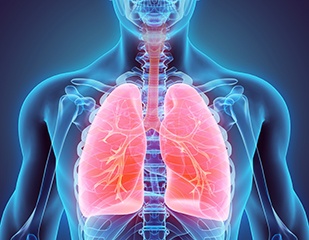 Every year, hundreds of organizations raise lung cancer awareness in November and for good reason. With an unfortunately high mortality rate, lung cancer is responsible for taking more lives than colon, breast, and prostate cancer combined. Although training and regulations are mandated, individual awareness may lack amongst individuals, especially in the workplace.
Every year, hundreds of organizations raise lung cancer awareness in November and for good reason. With an unfortunately high mortality rate, lung cancer is responsible for taking more lives than colon, breast, and prostate cancer combined. Although training and regulations are mandated, individual awareness may lack amongst individuals, especially in the workplace.
In honor of Lung Cancer Awareness Month, we’ve talked with the Mesothelioma + Asbestos Awareness Center to gather some advice on respiratory health awareness and how to keep safe while on the job. Taking time to understand these hazards and communicate them with your employees should be an important part of your workplace safety efforts.
Common Workplace Contaminants
Aside from first and secondhand cigarette smoke consumption, there are a number of workplace hazards that are detrimental to health including exposure to asbestos, arsenic, chromium, nickel, and radon. The Mesothelioma + Asbestos Awareness Center discusses these common workplace contaminants below:
- Asbestos: This naturally occurring mineral is a common carcinogen, with high risk of exposure in occupations including construction, shipyard work, mechanic performing maintenance, plant work, firefighting, electric work, engineering, plumbing, railroad, HVAC, sheet metal, and machine workers. Asbestos is known to cause mesothelioma cancer and contribute to other respiratory health concerns including lung cancer, asbestosis, pleural effusion, and more. Asbestos containing materials such as fiberglass insulations, ceiling, floor, roofing, and siding products can become damaged allowing the brittle mineral to become airborne. These materials should only be handled and properly disposed of by certified asbestos abatement specialists in order to prevent harmful 1st and 2nd hand exposure.
- Arsenic: Arsenic is a chemical element which occurs in many minerals, usually in combination with sulfur and metals or as a pure elemental crystal. Arsenic compounds have a wide variety of uses, common in agriculture, including insecticides, herbicides, larvicides, and pesticides, however workers in the manufacturing of glass and enamels; textiles; printing; tanning; taxidermy; anti-fouling paints; sludge control in lubricating oils; and other occupational processes, can also be exposed to arsenic. Inhalation of arsenic compounds is the most common form of exposure, which can lead to loss of appetite, nausea, vomiting, diarrhea, skin irritation, and more. Employers should look to provide affected employees with respirators, medical surveillance, and personal hygiene, sanitation, and lunchroom facilities to keep safe.
- Chromium: This lustrous, brittle metal is known for its tarnish-resistant, high melting point, and high-polish qualities. Exposure to chromium can occur from inhalation of dust, mist, or fumes. Contact with the eyes or skin can lead to rash, upset stomach, ulcers, respiratory health problems, weakened immune systems, kidney and liver damage, alteration of genetic material, lung cancer, and with enough exposure, death. Chromium is also used in dyes, alloys, paints, tanning of leather, and to make molds for firing bricks. With such an array for its uses, manufacturing professionals and construction workers including welders, painters, concrete masons, and steelworkers are all at risk of exposure to chromium.
- Nickel: Nickel is a chemical element which plays a major role in our everyday lives, including preparation equipment, mobile phones, medical equipment, transportation, buildings, power generation, and so much more. Workers in nickel production, including its compounds and alloys such as miners, millers, or those responsible for concentrating, smelting, converting, refining, and other operations are likely to be exposed to nickel, which poses harm to health and can lead to infertility, miscarriage, birth defects, and nervous system defects. The National Institute for Occupational Safety and Health warns that workers who inhale nickel laced dust and fumes are at an increased risk of lung cancer and fibrosis.
- Radon: Radon is an odorless, colorless, invisible gas. Prolonged exposure to this gas can lead to lung cancer, which is the second leading cause of lung cancer, following cigarette smoke. Trench workers or those working in excavations are most at risk. Radon is a by-product of the natural, radioactive decay of uranium and thorium found in rocks, soil, and water. These gas levels are generally greatest in basements, underground, or ground level worksites. Workplaces such as factories, offices, shops, nursing homes, residential care homes, health centers, and residential worksites are likely exposed to elevated levels of radon gas. Thankfully, the Management of Health and Safety at Work Regulations of 1999, require the assessment of health and safety risks include recommended radon controls.
Over 1.3 million different workplaces throughout the United States contain environments with elevated levels of dust, fog, smoke, mist, gas, vapor, and sprays. All of these could cause serious harm to your body such as cancer, lung impairment, disease, and even death. It’s important to be aware of the hazards listed above and educate yourself about preventative measures to take.
5 million workers in the United States are required to wear respirators, which can safeguard health, but only when used appropriately. Click here to learn more about respiratory protection and OSHA requirements.
Keeping Safe Year Round
These hazards aren’t just a concern in November for Lung Cancer Awareness Month – they can be impacting the safety of your workplace year round. Help educate your employees about airborne hazards and take action in your organization to reduce exposure.




